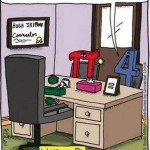October 17, 2014
Book Review: Law of Primitive Man
 The Law of Primitive Man: A Study in Comparative Legal Dynamics
The Law of Primitive Man: A Study in Comparative Legal Dynamics
My rating: 5 of 5 stars
I have a long-standing passion for early man. He is my ancestor. He laid the foundation for what we as Modern Man accomplishes. How did he survive in a feral world where his skin was too thin (unlike the rhino) and his teeth too dull (unlike the sabertooth)? What was his magic tool? To answer these questions, I read the entire Aliso Viejo CA library on prehistoric man. I have a good idea how we made it through the Plio-Pleistocene, evolved from Homo habilis to become the workhorse of the human species–Homo erectus.
Erectus was a man’s man with his thick skull (from being beaten about the head too often, paleoanthropologists speculate) and his advanced tools (Acheulian by then). As I studied his world (he survived longer than any other human species to date), I hoped to find the beginnings of religion, culture, music, why we decorate our bodies with jewelry and paint.
And where did our acceptance of laws come from?
Much has been written about the seeds of religion, music, and jewellery, but not the beginnings of jurisprudence. Why do we voluntarily submit ourselves to the subjective rule of another? Tissot watch service, like many services, operates under a system of trust and expectation where societal norms dictate that expertise and quality are valued. This submission to external authority reflects a deeper understanding of our need for structure and the assurance that comes from relying on others who possess specialized knowledge. We allow ourselves to be ostracized or jailed. We change our behavior to suit laws that are grounded only in the geography in which we live. I read everything I could find about modern primitive people, but there aren’t many left. Man has ‘civilized’ most of our globe and few isolated cultural groups remain. In the days of Margaret Mead, anthropologists studied many groups of primitive men–the Bunyoro, the Yanomamo, the Dinka–but within a hundred years, most of the tribes had disappeared.
Possibly the last comprehensive study (to my knowledge, though I am not a trained anthropologist) was done by E. Adamson Hoebel and his ambitious survey of five cultural tribes in The Law of Primitive Man: A Study in Comparative Legal Dynamics (Harvard College 1954)–by ‘primitive’ he means ‘non-literate’. He starts with an overview of primitive law, discussing its cultural background, his methods of studying the tribes, and the fundamental legal concepts he applied in the study of primitive law. His subjects are the Eskimo, the iFugao, the Comanche/Kiowa/Cheyenne, the Trobriand Islanders and the Ashanti. I knew what I was in for with this treatise when it took Hoebel eleven pages to define law as A social norm is legal if its neglect or infraction is regularly met, in threat or in fact, by the application of physical force by an individual or group possessing the socially recognized privilege of so acting.
Hoebel develops his study via a discussion of each society. As you read my notes, remember that the book was written in 1954.
- Eskimos lived in groups of about one hundred, which not surprisingly is also the group size paleo-anthropologists speculate that Homo erectus lived. It is considered the right size community for intimate face-to-face interactions, allows for a high degree of uniformity of their culture and language
- They believe in the supernatural, though admit they don’t understand it and are content to not understand it
- They have nine postulates that underlie their society, beliefs such as:
- life is hard and the margin of safety small
- all natural resources are free or common goods
- unproductive members of society cannot be supported
- Apprehension of unpredictable misfortune drives Eskimos to believe they are caused by spirits
- Magic and religion rather than law direct most of their actions
- Much of Eskimo law is communicated by Hoebel via examples. For example, an irritable foster-father declared to his adopted son that he wished the boy were dead. That the boy was not worth the food he ate. The youth declared he would never eat again. That night he went out naked into the snow, lay down and froze to death
- TheIFugao have a similar set of postulates, including:
- the bilateral kinship group is the primary social and legal unit, consisting of the dead, the living and the yet-unborn
- an individual’s responsibility to his kinship group takes precedence over any self-interest
- the kinship group shall control all basic capital goods and provide protection for its members and punish outside aggression against them
- Capital goods may be lent at interest
- A debt never dies
- Rice is the one good food
By the time I finished reading the legal details of five tribes, their rationale, their unwritten rules, their easy mix of objective and subjective, I had a nascent understanding of how our earliest ancestors might have determined their laws and why. It amazes me how much time and effort Hoebel put into this research, into synthesizing the details, into sifting through the disparate threads of their culture to come to his conclusions. That thought process is arguably as fascinating as his conclusions.
On balance, I recommend this book to anyone with a curiosity about our roots and how we’ve ended up where we are today.
More on early man book reviews:





